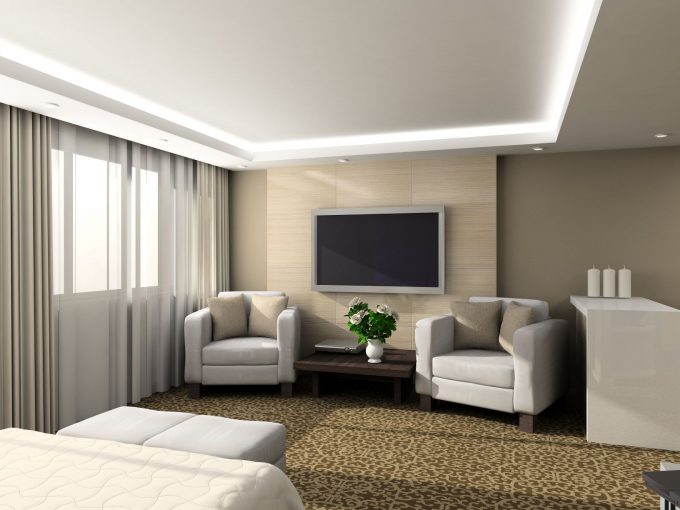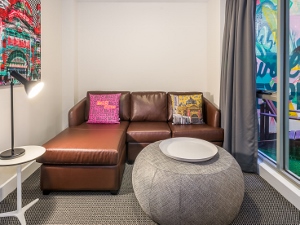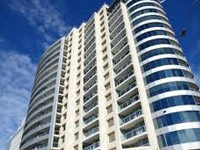
Casting call: Why accom needs to upgrade to Smart TVs
Over the last two years, our national viewing habits have evolved as radically as a Game of Thrones story line.
The meteoric rise of streaming technology means consumers have quickly adapted to a personalised viewing and listening experience that embraces what they like and delivers it to them on demand.
Netflix says nearly 14 million Australians now have access to some form of subscription TV, up 11.8 percent on this time last year.
Smart TV manufacturers have responded by creating new commercial media packages which include built-in streaming adaptors (such as Chromecast) for instant and secure casting, as well as full access to the operating systems and app stores that guests use every day at home.
The improved performance, customisation and flexibility means hoteliers can provide their guests with the latest infotainment experience.
Built-in functionality offers a straightforward connection between in-room TVs and any compatible device, with no login or app download required.
This allows full access to the content on guests’ own devices, cast onto their hotel room TV, plus access through Google Play Store, for example, to thousands of apps including YouTube and Spotify.
New developments are also providing a quantum leap in terms of connectivity and personalisation for accommodation managers.
Content, channel and app options can be combined into a home screen – operated by a simple remote control – which can be custom-designed and branded according to the provider’s specifications.
Management platforms such as Philips’ CMND allow properties to create content, push it live across all screens and update it with ease. Managers can schedule individually tailored content – such as language spoken or business function details – to create personalised in-room communications across one or 100 rooms. And they can install, delete and manage apps on individually selected TVs, or across an entire TV network.
As Earl Stevens, managing director of LeasePlus, says: “With these systems, hotel managers can deliver customised welcome messages, promotional offers and local attraction information to specific rooms.”
They even allow accom properties to offer an on-screen customer satisfaction survey for instant guest feedback – in time for any grievances to be addressed before negative reviews appear on TripAdvisor.
Analytics provided through the system, meanwhile, provides data which helps properties to customise their advertising and viewing options in differing situations and locations.
Remote management
We asked Greg Bassine, director of Streamvision, to explain more about the advantages of remote management of TVs.
He said: “Within a connected world, it is important that management teams of accommodation properties have access to key systems which can have a dramatic and immediate effect on their revenue and performance.
“Most systems within the hospitality market are built on cloud, or web based and hosted internally. That means a manager of a property can easily access the system through a web browser. Whether they can connect to the system remotely often depends on their IT policies.
“The advantage of being able to connect wherever they are is they can enact marketing opportunities or information bulletins as and when needed.
“This allows their go-to-market time to reduce and can bring amazing results in both revenue and customer service.”
BYO
While there are many ways for a guest to BYOC (bring your own content) to a guestroom, the latest are far less cumbersome and damaging than their predecessors.
Greg says: “The obvious ones are plugging a USB device into the TV or having a playable device such as Blu Ray player or other device and connecting it to the in-room TV via HDMI.
“While these methods are still often used, they are not practical for the guest or property. Guests do not want to carry more devices than they already do, and unfortunately there are a lot of damaged TVs out there from guests plugging devices in and roughly taking them out.
“The technology coming to market now gives the guest the ability to ‘cast’ their own content from their personal mobile devices, including devices from Apple, Android and PC.
“There are two accepted practices for this. There is screen mirroring, where a guest’s mobile device screen is replicated onto an in-room TV through various protocols, or the more practical method where a guest can ‘cast’ their content from an app, and this app speaks to the TV to receive the content from the original source.
“The guest’s mobile device is simply directing the TV to stream content from the content provider vs. sending it from the guest device to the TV. This allows the guest to use their mobile device whilst still enjoying the content they want to watch.”
Payment plans
Whatever your requirements in terms of screen sizes and numbers, manufacturers allow for a shortage of running capital across hospitality businesses and understand the importance of maintaining a current inventory of TVs.
Lease options are offered by the major players which cover installation, maintenance and design options for properties ranging from country town motels to large resort and hotel groups.
Options include quarterly payments over set term periods and can be negotiated direct with the company.
Sizes and styling
According to Greg, TV sizes and styles change as rapidly as the technology they employ.
“The current sizing for TVs in the hospitality market are 32, 40, 49, 55 and 65 inch, but these sizes often change year by year,” he said.
“When it comes to design, the trend always seems to be towards smaller bezels, making the screen immersive with its surroundings.”

AccomNews is not affiliated with any government agency, body or political party. We are an independently owned, family-operated magazine.







